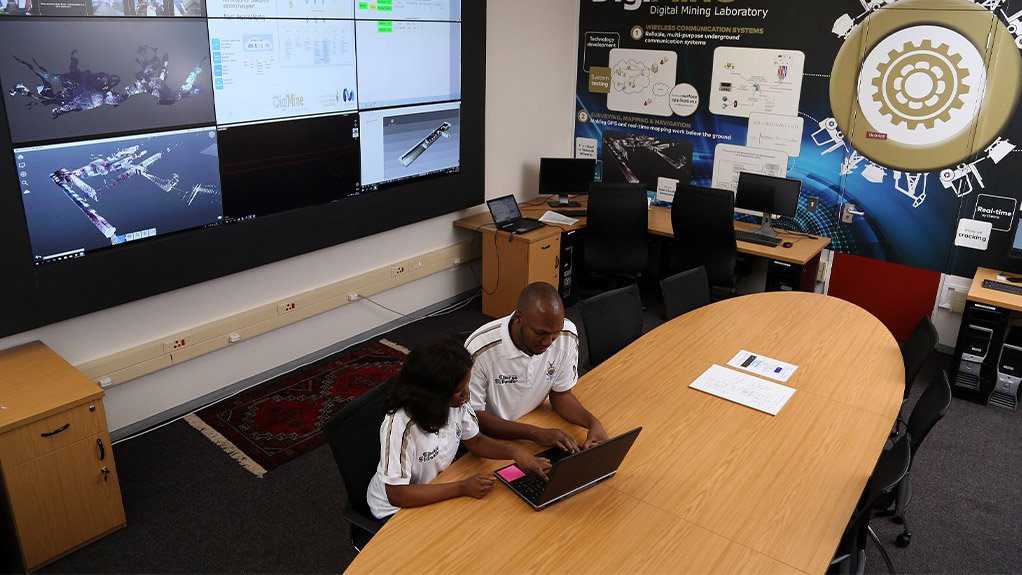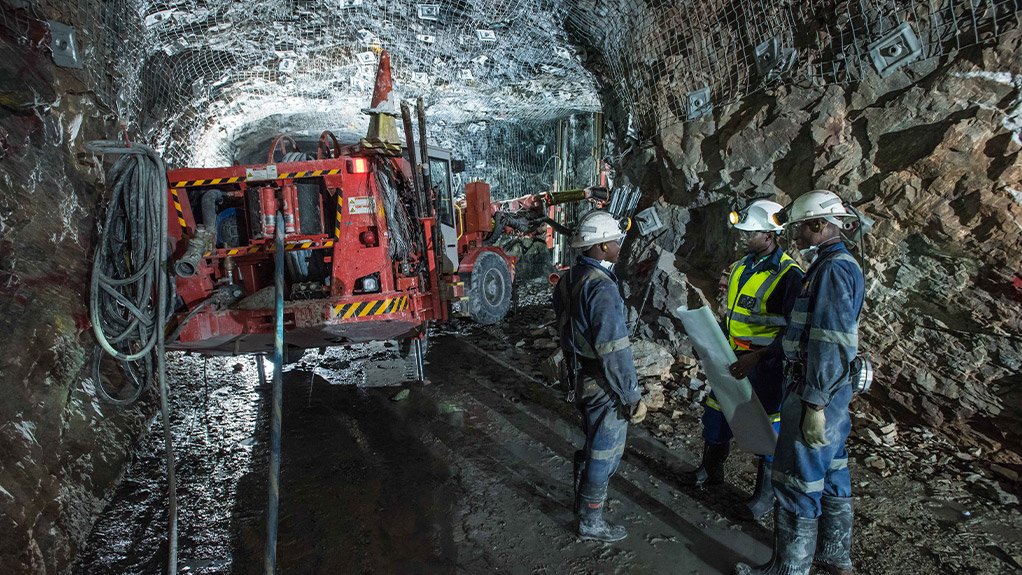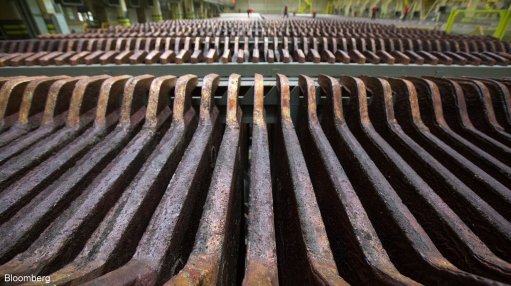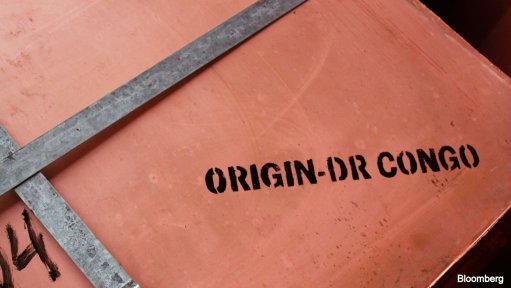Digital technologies address mine modernisation



WITS DIGIMINE CONTROL ROOM DigiMine is equipped with digital systems that allow for hands-on research into ‘the mine of the future’
DEEP THOUGHTS The Wits Sibanye-Stillwater DigiMine's research agenda is focused on transferring surface digital technologies into underground environments
Mineworkers and communities are negatively affected – through frequent and large-scale retrenchments – by the twenty-first-century trend of mine modernisation, which shows that the mismatch between twenty-first-century jobs and twentieth-century skills sets needs to urgently be addressed by digital technologies, says University of the Witwatersrand (Wits) Mining Institute director Professor Fred Cawood.
“Digital technologies are well-suited to help address this need,” he asserts.
Cawood tells Mining Weekly that, although Wits is one of the world’s foremost institutions providing university-level mining education, technical and vocational education and training- (TVET-) level mining education is limited in South Africa, noting that the model for training at technician and artisan level must be reconsidered.
Companies generally assume the responsibility for providing job-relevant training for their workers that is supported by the national system of education. Considering the multiplicity of challenges of twenty-first-century mining, better TVET-level education will assist employers and workers, he adds.
However, Cawood states that the Fourth Industrial Revolution (4IR) is not so much changing what we are doing – “it is changing how we are doing things”. For the mining sector, the opportunity lies in value-add through real-time decisions on safety and efficiency. This is technology’s value proposition to mining – and to the jobless but tech-savvy youth.
The 4IR and digital technologies can positively affect modern education and training. One example is how digital assistants, through Internet-based learning – become educators and instructors, teaching wherever and whenever to whoever. Another example is where digital assistants, such as virtual reality learning materials assist educators to ‘visualise’ and provide evidence of the learning process, Cawood notes, adding that such digital assistants are “profoundly disruptive”.
However, the ‘wow’ factor and the ability to create short-term results through digital assistants may result in the learning of fundamentals being neglected. “Fundamentals are and will always be important,” he stresses, adding that fundamental learning approaches need to be balanced with the gadgets of the 4IR.
With the current solutions for effective stakeholder engagement and training having had mixed results, often resulting in underperformance, the Wits Mining Institute can contribute to a sustainable mining model for Africa.
Cawood stresses that the focus must be more on finding new solutions for sustainable mining districts, as well as on providing skills development for jobs in mining regions.
“The world has changed – what used to be an innovative approach ten years ago no longer works. We have to co-create a better future for mine and community sustainability, with our deep understanding of Mining 4.0 and the future of work,” says Cawood.
He further elaborates that the vision of the institute is to provide innovation in the extractive sectors through skills, modernisation and sustainable development of resource-rich Africa.
The institute seeks to influence the world through generating new knowledge, influencing policy, building strategic partnerships and leading society.
Digital Progress
A strong focus of the Wits Mining Institute is the Sibanye-Stillwater DigiMine laboratory. Hosted by the institute, it is equipped with digital systems that allow for hands-on research into the mine of the future. Its research agenda is focused on transferring surface digital technologies into underground environments, enabling mines to observe, evaluate and take action in real time or near real time.
DigiMine, which received a commitment of an additional R30-million over three years from diversified major Sibanye-Stillwater last month, is linked to the Tshimologong and a new Mining Technology Incubator in Braamfontein, which is fast becoming a digital innovation ecosystem to support industry, including mining.
The research agenda covers any digital advances that can reduce risk in the mining environment, and includes systems for communication, monitoring, positioning, navigation, detection of abnormalities and risk management – thus, innovation for real-time mining at reduced risk.
To assist in the achievement of the DigiMine objectives of real-time positioning, mapping and navigation underground, DigiMine has established the Joint International Research Laboratory of China-Africa Mining Geospatial Informatics.
“The Wits Mining Institute has been successful in terms of its role to expedite the emergence of a twenty-first-century model for mining that is sustainable, responsible and competitive,” Cawood says.
The future role of mining in the social economy depends heavily on innovation in every associated dimension, with the primary focus on applicable research of the highest quality, addressing multidisciplinary and complex questions. The need for innovation is significant.
“South Africa must leverage and support whoever is doing mining research that can strengthen the national system of innovation, sustain the industry and create new jobs,” he concludes.
Comments
Press Office
Announcements
What's On
Subscribe to improve your user experience...
Option 1 (equivalent of R125 a month):
Receive a weekly copy of Creamer Media's Engineering News & Mining Weekly magazine
(print copy for those in South Africa and e-magazine for those outside of South Africa)
Receive daily email newsletters
Access to full search results
Access archive of magazine back copies
Access to Projects in Progress
Access to ONE Research Report of your choice in PDF format
Option 2 (equivalent of R375 a month):
All benefits from Option 1
PLUS
Access to Creamer Media's Research Channel Africa for ALL Research Reports, in PDF format, on various industrial and mining sectors
including Electricity; Water; Energy Transition; Hydrogen; Roads, Rail and Ports; Coal; Gold; Platinum; Battery Metals; etc.
Already a subscriber?
Forgotten your password?
Receive weekly copy of Creamer Media's Engineering News & Mining Weekly magazine (print copy for those in South Africa and e-magazine for those outside of South Africa)
➕
Recieve daily email newsletters
➕
Access to full search results
➕
Access archive of magazine back copies
➕
Access to Projects in Progress
➕
Access to ONE Research Report of your choice in PDF format
RESEARCH CHANNEL AFRICA
R4500 (equivalent of R375 a month)
SUBSCRIBEAll benefits from Option 1
➕
Access to Creamer Media's Research Channel Africa for ALL Research Reports on various industrial and mining sectors, in PDF format, including on:
Electricity
➕
Water
➕
Energy Transition
➕
Hydrogen
➕
Roads, Rail and Ports
➕
Coal
➕
Gold
➕
Platinum
➕
Battery Metals
➕
etc.
Receive all benefits from Option 1 or Option 2 delivered to numerous people at your company
➕
Multiple User names and Passwords for simultaneous log-ins
➕
Intranet integration access to all in your organisation




















